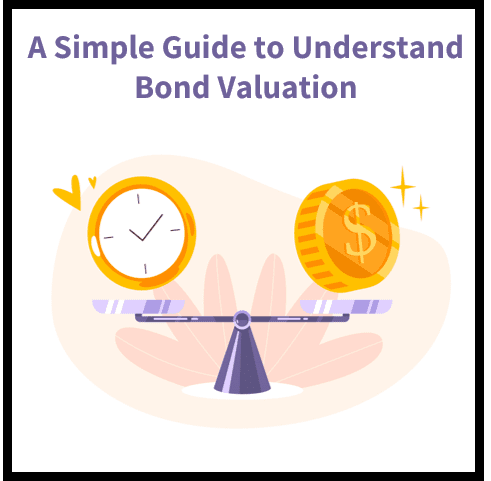Corporate bonds are a type of fixed-income security issued by corporations. Like other fixed-income securities such as bonds or notes, corporate bonds are loans given to companies with the promise of receiving your principal back with interest at a later date. For most investors, it can be difficult to evaluate how much an individual bond is worth. Corporate bonds tend to have more complex valuations than other fixed-income securities because they involve equity components, multiple repayment schedules and different types of risks. Nevertheless, there are some simple steps you can take to understand the value of a corporate bond.
What is a Corporate Bond?
A corporate bond is a type of fixed-income security issued by corporations. It is a loan given to a corporation with the promise of receiving your principal back with interest at a later date. Corporate bonds are generally considered riskier than government bonds because they are unsecured, meaning that there is no collateral backing the loan. Corporate bonds are also referred to as corporate debt or corporate bonds. While corporate bonds can be issued by both private and public companies, they are more common among private companies.

Understand Existing Market Conditions
When it comes to valuing bonds, the most important thing to understand is the current market conditions. Market conditions can have a huge impact on the value of your bond. It is important to know how much other corporations are issuing, the nation’s gross domestic product (GDP) and the current interest rate environment. For example, if the market is booming and other corporations are issuing a lot of bonds, the value of your bond may go down since there is more supply than demand. The value might go down even more if the GDP is high since it means there are more opportunities for investment.
Determine the Bond’s Coupon and Yield
Coupon is the amount of interest you receive at regular intervals until the maturity date of the bond. When you buy a bond, you’re investing in the cash flow it will send you over the life of the bond. Your investment amount is the bond’s principal, which is the amount you’re loaning to the issuer. The yield is a measure of the return on an investment. It is calculated as the annual return divided by the investment’s cost. For example, if you get an annual return of 10% on an investment with an original price of $1,000, your yield is 10%. The yield on a corporate bond is the annual amount you receive in interest, divided by the bond’s price.
Determine the Face Value and Par Value
The face value is the amount that the bond issuer will pay you at maturity. This is the amount that you could theoretically use to repay your loan if you hold the bond until its maturity date. The par value is the original value of a bond that is set when it is first issued. This is generally equal to the bond’s principal amount. Par value is generally used when a bond is issued at a discount or at par. Discounts are offered to entice investors to buy the bond, while the original price is set for par.
Determine the Equity Value
The equity value is the return you would earn if the bond issuer were to go bankrupt. When a company goes bankrupt, the equity value is the amount that investors would receive if they liquidated the company. Generally, the equity value is significantly lower than the bond’s face value. You can use a corporate bond’s rating and the recovery rate to get an idea of the equity value. The rating is an analysis of the risk associated with investing in a specific bond. The recovery rate is an estimate of what percentage of the bond’s original value an investor would receive if the company went bankrupt.
Determine the Debt Repayment Amount
The debt repayment amount is the amount of principal and interest payments that the bond issuer owes you. This amount is dependent on the bond’s terms and conditions, so be sure to review these beforehand. You can use the Capital Asset Pricing Model (CAPM) to calculate the debt repayment amount. The CAPM is used to determine the expected return of an investment based on the risk involved. This model considers three primary factors: risk, market conditions and the coupon rate.
Determine the Risk-Adjusted Present Value
When you determine the risk-adjusted present value, you’re calculating the present value of the bond based on its risk. The risk-adjusted present value takes into account both the bond’s expected return and the amount of risk associated with that investment. The expected return on a corporate bond is calculated using the CAPM and the risk associated with the bond is based on its rating. The CAPM formula is adjusted slightly to account for the risk associated with the bond’s rating. Additionally, the expected return of a corporate bond is reduced by around 10% to account for the risk. For example, if the expected return of a bond is 10% and its risk is determined to be moderate, the risk-adjusted present value is around 90% of the bond’s face value.
How to Calculate the Value of a Corporate Bond
The value of a bond is determined by its price, the length of time until maturity and the coupon rate. When calculating the value of a corporate bond, you’ll also need to consider the current market conditions, the bond’s rating and its par value. To calculate the value of a corporate bond, use the following formula: ( text{Market Price} – text{Par Value} + text{Face Value} – text{Coupon Rate} ) If you are looking to purchase a bond, you’ll want to purchase a bond when its value is lower than its face value. A bond’s value is generally lower at the beginning of its life cycle.
Summing up
Corporate bonds are a type of fixed-income security issued by corporations. They are a loan given to a corporation with the promise of receiving your principal back with interest at a later date. Corporate bonds are generally considered riskier than government bonds because they are unsecured, meaning that there is no collateral backing the loan. When it comes to valuing bonds, the most important thing to understand is the current market conditions. Market conditions can have a huge impact on the value of your bond. When calculating the value of a corporate bond, you’ll need to consider the length of time until maturity, the coupon rate and the market conditions.



2 thoughts on “How to Value Corporate Bonds: A Simple Guide to Understanding Valuation”
[…] Debt and other liabilities: This includes the total debt of a company, such as loans, bonds, and other borrowings. It also takes into account other long-term liabilities, such as pensions and […]
I value the blog article.Much thanks again. Want more.